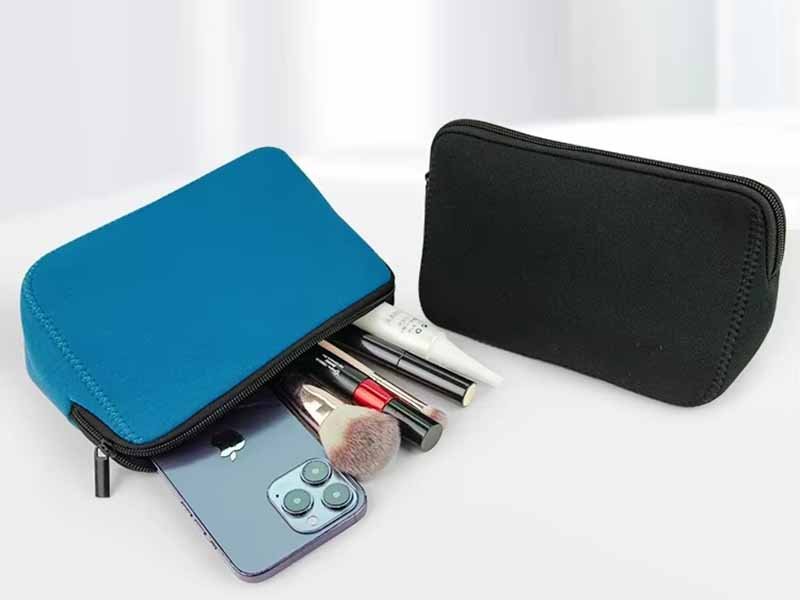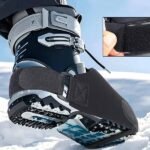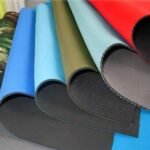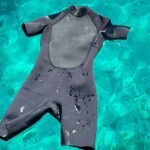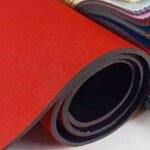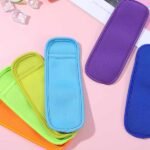Traveling light and smart isn’t just a trend—it’s a necessity for the modern woman on the go. Whether you’re hopping continents for business or jetting off on a weekend getaway, the right toiletry bag can make the difference between a smooth morning routine and a frantic hunt for your favorite moisturizer. From multiple compartments to leakproof liners, today’s top designs blend style and function.
The best travel toiletry bag for women combines durable materials (like neoprene or nylon), customizable compartments for organization, leakproof pockets for liquids, and a lightweight, washable design. Ideal sizes range from compact (under 1 liter) for quick trips to larger (2–3 liters) for extended travel. Look for hanging hooks, transparent pouches, and reinforced seams to keep your essentials safe and accessible on every journey.
Imagine breezing through TSA with everything neatly stowed in color-coded compartments… and then picture your best friend’s envy when you pull out a sleek, neoprene Szoneier bag that matches her suitcase. Intrigued? Let’s dive deeper.
What Features Define the Best Travel Toiletry Bag for Women?
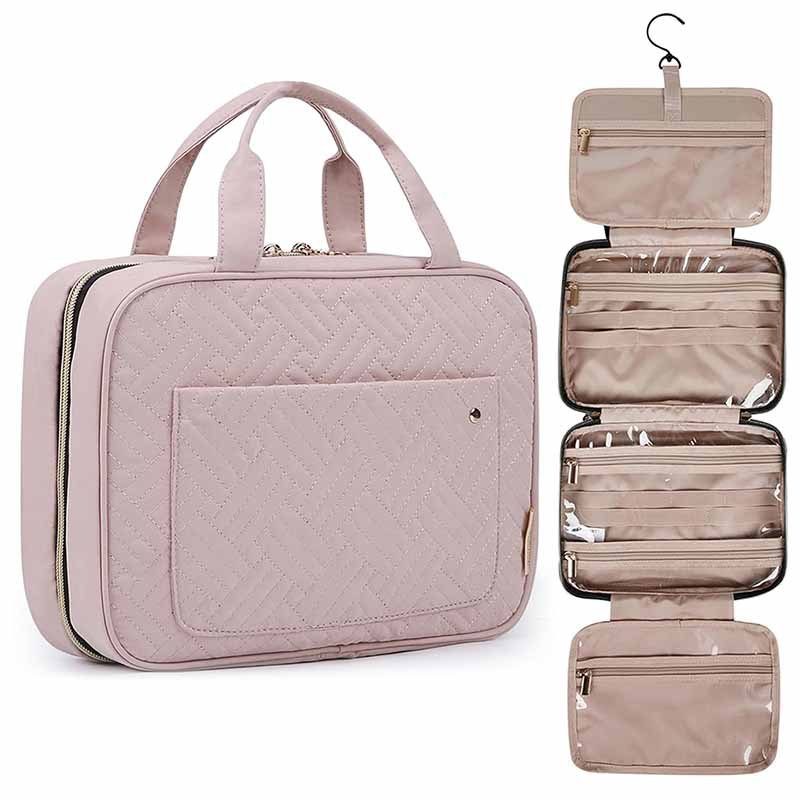
The best travel toiletry bag for women offers multiple zippered compartments, adjustable dividers, a hanging hook, durable and washable material, plus a clear pocket for liquids under 100 ml. Compact yet expandable, it should fit under airline size limits while holding all daily essentials securely.
Compartmentalization & Dividers
- Zippered Pockets: Secure small items like tweezers, lipstick, and travel-size creams in interior zip pouches to prevent spills and jumbling.
- Adjustable Dividers: Velcro® or slide-in dividers let you tailor the interior layout. For example, split a 10 × 8 inch main bay into smaller bins for brushes vs. bottles.
- Mesh vs. Opaque: Mesh pockets offer visibility but can snag, while opaque neoprene pockets hide personal items and resist staining.
Hanging vs. Flat Design
- Built-in Hook: Stainless steel or plastic hooks let you suspend the bag from bathroom rods or towel racks, keeping counters clutter-free and away from splashes.
- Flat Lay Option: Some bags unzip fully to lay flat—ideal in tight hotel vanities or shared bathrooms—revealing all contents at once.
Weight & Packability
- Lightweight Neoprene (100–200 g): Soft, stretchable, and waterproof, neoprene weighs less than heavy canvas or leather.
- Fold-Flat Construction: Bags without rigid frames compress easily into luggage bottoms, maximizing space.
External vs. Internal Pockets
- Exterior Quick-Access: Small zip on the outside for frequently used items like toothpaste or hand sanitizer.
- Internal Elastic Loops: Perfect for securing toothbrushes, razors, or makeup brushes upright.
Closure Mechanisms
- Dual-Zipper Design: Allows opening from either side. Look for water-resistant coil zippers with large pull tabs for easy operation.
- Magnetic Flap or Snap: Adds an extra layer of protection but can wear over time.
Airtight/Liquid Protecting
- Sealed Seams: Heat-sealed or taped seams prevent leaks between compartments.
- Silicone Liners: Provide spill-proof containment—ideal for shampoos or serums.
By carefully evaluating these key features, women can select a toiletry bag that streamlines packing, reduces mess, and ensures essentials stay in place. Yet every traveler has unique needs—let’s explore material and style choices next.
Which Materials and Designs Offer Durability and Style?
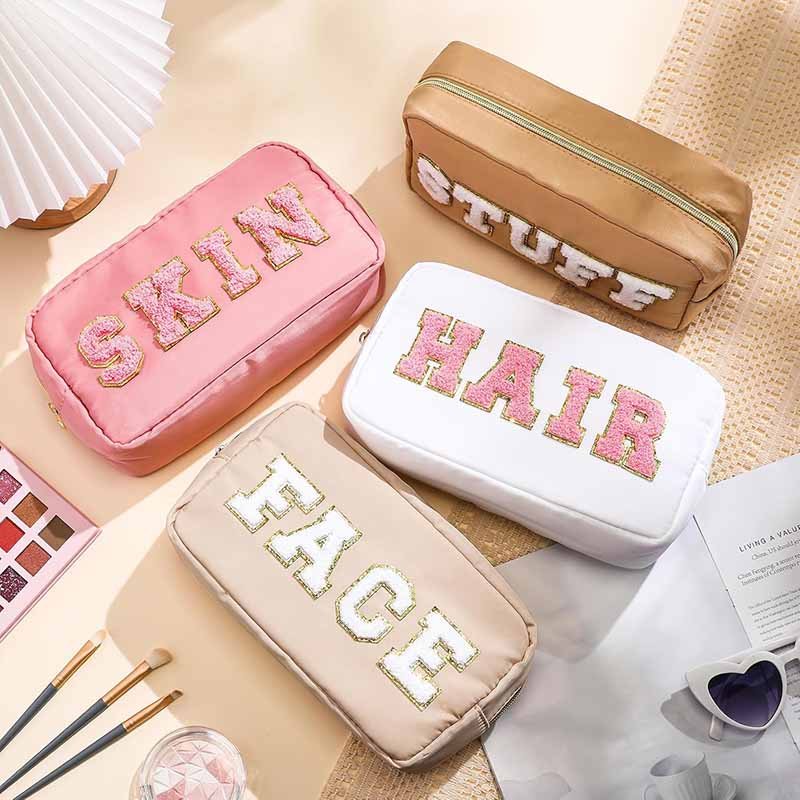
Neoprene, nylon, and canvas top the list: neoprene is stretchable, waterproof, and easy to clean; nylon is lightweight and abrasion-resistant; canvas adds a fashionable texture but is heavier. Choose vibrant prints or solid neutrals to match your personal aesthetic, with reinforced stitching for long-term use.
Neoprene
- Water Resistance: Closed-cell structure repels water and prevents saturation, keeping contents dry even if the bag’s surface gets wet.
- Flexibility: Stretch accommodates odd-shaped bottles. A 0.5 mm neoprene lining adds cushioning and thermal insulation—ideal for temperature-sensitive products.
- Maintenance: Wipe clean or machine-wash on gentle cycle; air-dry completely to prevent mildew.
Nylon (Ripstop or Packcloth)
- Abuse-Proof: Ripstop weave resists tears; however, light coating for water repellency adds stiffness.
- Weight vs. Durability: 210 D nylon (approx. 80 g/m²) strikes a balance. 420 D doubles strength but can feel rigid.
- Drying Time: Dries quickly after spills or washes, perfect for outdoor enthusiasts.
Canvas (Cotton or Poly-Blend)
- Aesthetic Appeal: Offers a boutique-style finish, often paired with leather accents.
- Care Needs: Requires spot cleaning and occasional re-waxing if treated. Heavier—plan for extra luggage weight.
Coatings & Finishes
- PU Coating: Adds a matte or glossy finish, improving water repellency.
- Anti-Bacterial Treatments: Silver-ion or bamboo charcoal infusions can reduce odors and mold growth.
Design Elements
- Color-Coding: Use interior panels in contrasting hues—light interiors improve visibility of dark items.
- Patterns vs. Solids: Floral prints hide stains but may clash with other luggage; solids are versatile.
Customization Opportunities
- Logo Embossing or Debossing: Low MOQ allows monogramming handles or exterior panels.
- Patchwork or Color Blocking: Combine fabrics for a signature look—e.g., neoprene body with nylon accents.
By weighing aesthetics against function, you’ll choose a toiletry bag material that endures travel rigors while complementing personal style. Next, capacity matters—let’s size things up.
How Much Capacity Is Ideal for Different Trip Lengths?
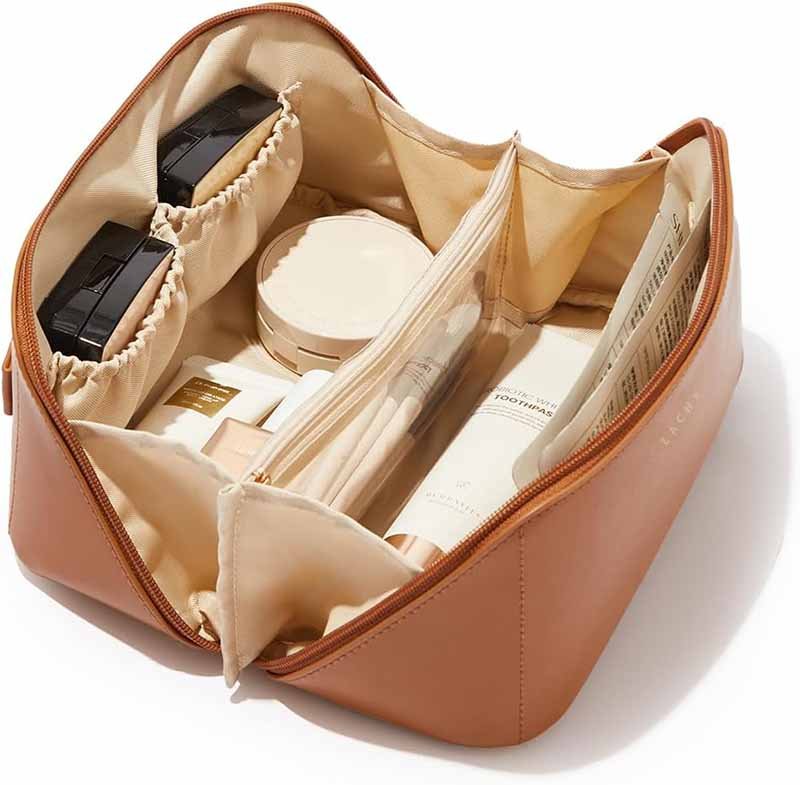
For weekend getaways, 1–1.5 L capacity holds travel-size essentials. Weekly trips need 2–3 L, fitting full-size bottles. Extended travel (2+ weeks) benefits from 4–5 L, or modular pouches within a larger kit. Balance size with your luggage allowance and packing style to avoid overstuffing.
Capacity Tiers & Use Cases
| Trip Length | Capacity | Typical Contents |
|---|---|---|
| Weekend (2 days) | 1–1.5 L | 3× 30 ml bottles, toothbrush, compact kit |
| Short (3–5 days) | 2–3 L | 5× 50 ml bottles, makeup, small tools |
| Long (1 week) | 3–4 L | Full-size toiletries, hairbrush, extras |
| Extended (>1 wk) | 4–5 L+ | Refill-able bottles, specialized gear |
Packing Efficiency
- Group Similar Items: Liquids in one pouch, solids in another to streamline TSA checks.
- Modular Inserts: Removable pods let you grab essentials without unpacking the whole bag.
Shape Considerations
- Cube vs. Oblong: Cube-style maximizes volume but may not fit narrow suitcase sections; oblong shapes slide into side compartments.
- Expandable Zippers: Ease over-packing by adding 1 cm depth when needed.
Weight Management
- Empty Weight: Compare bags: neoprene shell (150 g) vs. nylon (100 g) vs. canvas (250 g).
- Wet vs. Dry: Neoprene holds water if wet—factor extra weight and drying time.
User Persona Examples
- Business Traveler: Needs compact kit (<2 L) with neat compartments for makeup and grooming tools.
- Adventure Seeker: Prefers rugged, waterproof 3 L bag with hanging hook for campsite use.
- Family Vacationer: Looks for a large 5 L bag with kid-friendly pockets and clear windows.
Matching capacity to trip type avoids overpacking and stress. Now, let’s compare popular form factors to suit your routine.
Do Hanging Organizers, Dopp Kits, or Cosmetic Cases Suit Your Needs?
Hanging organizers excel in shared spaces, dopp kits fit traditional bathrooms, and cosmetic cases are perfect for makeup-heavy kits. Choose based on where you unpack: hook-up designs save counter space, while sturdy cases protect fragile items in transit.
Hanging Organizers
- Pros: Unfolds to reveal all items at eye level; minimizes unpacking.
- Cons: Requires a stable hook or towel bar; bulkier when packed flat.
Traditional Dopp Kits
- Pros: Zip-top opening keeps everything contained; classic silhouette fits in luggage pockets.
- Cons: Limited visibility—items can get lost at the bottom; no hanging option.
Cosmetic Cases
- Pros: Structured compartments tailored for brushes, palettes, and compacts; rigid walls protect delicate items.
- Cons: Heavier and less flexible; may exceed luggage weight limits.
Hybrid Designs
- Multi-mode Bags: Detachable pouch panels convert between hanging and flat modes.
- Modular Inserts: Swap out brush rolls or travel-size pods based on trip needs.
Material Impact
- Neoprene Blends: Offer the flexibility for hybrid designs; the elasticity grips items when closed.
- Hard-Shell Inserts: Polycarbonate panels add rigidity but impact packability.
Use-Case Scenarios
- Business Hotel Travel: Hanging kits keep cars and hotel bathrooms sleek.
- Airbnb Stays: Dopp kits allow quick stowing in shared spaces.
- Cruises & Road Trips: Cosmetic cases handle movement without toppling.
By understanding each form factor’s strengths, you can choose a style that aligns with your travel habits. Next, let’s ensure your bag stands up to spills.
Are Waterproof and Leakproof Compartments Necessary?

Yes—waterproof materials and sealed seams prevent leaks, protect fabrics, and contain accidental spills. Silicone-lined pockets and TPU windows add extra security, making maintenance simple and keeping your suitcase safe from shampoo overspray or broken bottles.
Waterproof Shell vs. Liner
- Exterior Coating: PU or TPU lamination repels moisture from rain or sink splashes.
- Internal Liner: Removable silicone or PEVA liners catch drips for easy cleaning.
Seam Sealing Techniques
- Heat-Taped Seams: Creates continuous waterproof barrier—common in premium outdoor gear.
- Liquid-Seam Adhesive: Flexible but can degrade over time in high-heat conditions.
Zipper Selection
- Water-Resistant Coil Zippers: Feature a polyurethane coating but require careful maintenance to avoid debris buildup.
- Rubber-Sealed YKK Zippers: Offer best leak protection; slightly stiffer operation.
Pocket Design
- Dedicated Wet Pocket: Isolate damp items (e.g., used toothbrushes) from dry gear.
- Transparent TPU Windows: Allow quick inspection of liquids without opening compartment—useful in airport security lines.
Performance Testing
- Submersion Test: Bags should withstand 5–10 cm water submersion for 1 minute without ingress.
- Shake Test: Simulates broken bottle scenario—ensure no seepage under agitation.
Cleaning & Maintenance
- Wipe-Down Routine: After each trip, rinse liner pockets with warm water and mild detergent.
- Drying Protocol: Hang open in shaded area to prevent UV-damage on TPU or neoprene.
Investing in leakproof features saves time and protects other belongings. Now, let’s explore how to make your bag uniquely yours.
Which Personalization and Custom Branding Options Enhance Your Travel Bag?
Monogramming, silicone logo patches, debossed leather tags, and full-color digital prints are top customization choices. Low-MOQ runs allow brands to add unique color palettes, custom zippers, and temperature-color-coded panels, elevating product appeal and recognition.
Embossed & Debossed Logos
- Materials: Use faux-leather or PU for clean deboss impressions; neoprene embossing creates subtle branding.
- Cost Factors: Deboss: $0.50–$1.00 per unit; emboss: similar range depending on mold complexity.
Silicone & Rubber Patches
- Durability: Weatherproof and flexible; ideal for outdoor-oriented bags.
- Lead Time: 2–3 weeks including mold creation; MOQs as low as 200 pcs.
Full-Color Digital Prints
- Design Freedom: Gradient and photographic prints possible on polyester panels.
- Pricing: Approx. $2.00 per side for runs of 500⁺.
Custom Hardware & Zippers
- Pull-Tab Shapes: Rectangle, teardrop, or branded shapes add distinctive flair.
- Color Matching: Pantone® matching on zipper tapes enhances brand cohesion.
Interior Color-Coding
- Temperature Guide Example: Blue panels for cool-weather toiletries, orange for warm climates—novelty that aids user organization.
- Implementation: Order in batches of 300 pcs to access multiple panel color options.
Packaging & Extras
- Drawstring Dust Bags: Customized non-woven bags protect product during storage.
- Hang Tags & Care Cards: Laminated cards detailing wash instructions reinforce quality perception.
By leveraging these customization avenues, brands and individuals alike can craft a toiletry bag that stands out on shelves and racks. Lastly, let’s ensure your new bag lasts for years.
How Do You Care for and Maintain Your Travel Toiletry Bag?
Clean with mild soap and water, spot-treat stains promptly, air-dry fully inside-out, and store empty in a cool, dry place. Avoid bleach and high-heat dryers; regularly inspect seams and zippers for wear to prolong life and performance.
Cleaning Protocols by Material
- Neoprene: Machine-wash gentle cycle in mesh bag; hang to dry away from direct sunlight.
- Nylon: Hand-wash or gentle machine cycle; air-dry. Avoid fabric softeners that reduce water repellency.
- Canvas: Spot-clean with mild detergent; re-wax treated canvas annually.
Stain Removal Tips
- Oil-Based Stains: Pre-treat with dish soap; let sit 10 minutes before washing.
- Ink Marks: Apply isopropyl alcohol on cotton swab; blot gently.
Zipper & Hardware Care
- Lubrication: Rub wax candle or zipper lubricant to prevent sticking.
- Inspection: Check slider function and sew loose ends immediately.
Seam Maintenance
- Re-sealing: Apply seam-seal tape or liquid seam sealer to stressed areas after heavy use.
- Reinforcement Stitches: Add small hand-sewn stitches to prevent seam opening.
Storage Recommendations
- Empty & Dry: Always store empty, unzipped, and inverted in a ventilated area.
- Dust Bag: Use included drawstring bag to keep dust and pests away.
When to Replace
- Signs of Wear: Frayed seams, torn liners, zipper failures—upgrade after 1–2 years of regular travel.
- Recycling Options: Many materials are recyclable; inquire with manufacturer about take-back programs.
Proper care extends lifespan, maintains hygiene, and ensures your investment in a quality toiletry bag pays off trip after trip.
Ready to Customize Your Perfect Toiletry Bag?
At Szoneier, we combine 18+ years of neoprene expertise with flexible customization. Whether you need custom branding, color-coded panels, or specialized compartments, our low-MOQ, rapid-sampling service makes it simple. Contact us today to request a free design consultation and sample. Let’s craft the ultimate travel toiletry bag tailored to your needs!

